Lamb Stew
Published Dec 30, 2024
This lamb stew is so good, with yummy Mediterranean flavors, hearty veggies, and chickpeas, it's slow cooked making the lamb tender and juicy.
This post may contain affiliate links. Please read our disclosure policy.
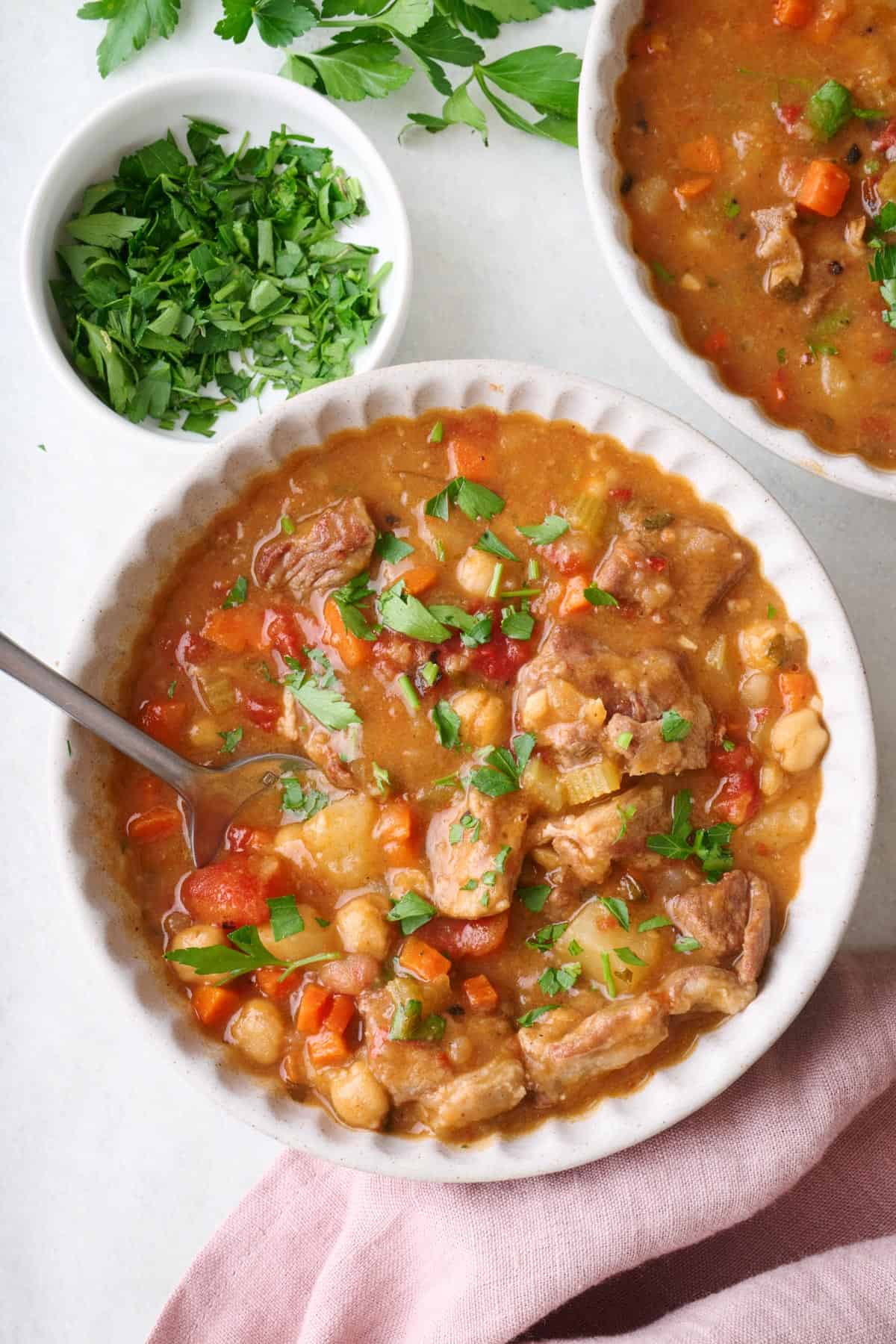
Jump to Section
My Lamb Stew Recipe is So Good!

I don’t always have lamb on hand, but when I do, I’m basically running to grab my stew pot. There’s just something about lamb stew that feels so comforting.
The lamb gets melt-in-your-mouth tender, the potatoes soak up all that spiced, flavorful broth, and the whole thing just hits the spot, especially on a cold night.
What I love about this lamb stew recipe is how easy it is to throw together—once it’s on the stove, it pretty much does its own thing. And the smell? Let’s just say, everyone in my house knows dinner’s going to be good when this is simmering away. Plus, it tastes even better the next day (if there are leftovers).

Ingredients You’ll Need
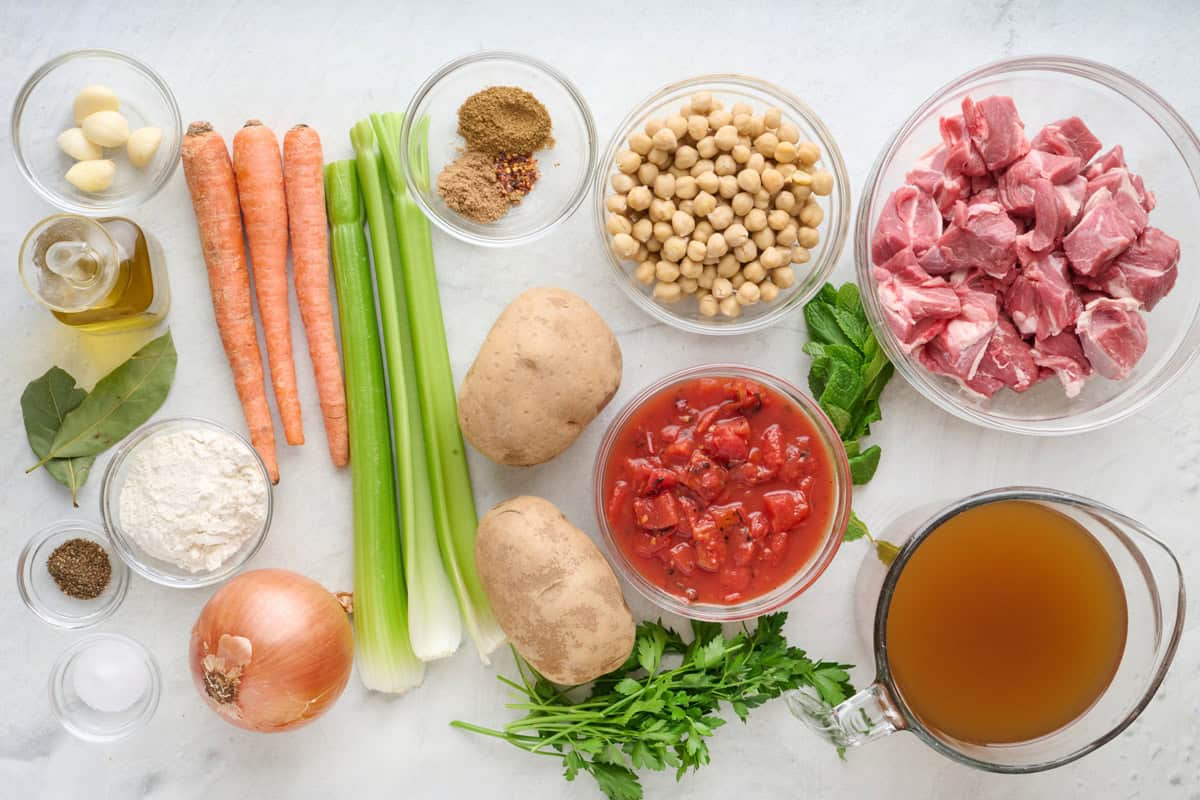
- Lamb Shoulder: This cut is perfect for stew because it’s tender and flavorful when slow-cooked. If you can’t find lamb shoulder, lamb leg or even beef can work as substitutes.
- Salt and Black Pepper: Seasoning the lamb before cooking helps build flavor right from the start.
- All-Purpose Flour: A light coating of flour helps the lamb brown and also thickens the stew. If you’re gluten-free, you can use a gluten-free flour blend or skip it altogether.
- Olive Oil: Used for browning the lamb and sautéing the veggies. Any neutral oil, like avocado or vegetable oil, works too.
- Onion, Carrots, and Celery: This classic trio adds a flavorful base to the stew. If you’re out of celery, you can use diced bell peppers or just double up on carrots.
- Garlic: Fresh garlic adds depth to the stew. If you’re out, ½ teaspoon of garlic powder can work.
- Cumin, Coriander, Bay Leaf and Crushed Red Peppers: These warm spices give the stew its earthy, slightly smoky flavor. You can adjust the amount to taste or add a little cinnamon for extra warmth.
- Vegetable Broth: This makes up the base of the stew. If you prefer, chicken stock or beef broth work just as well.
- Fire-Roasted Diced Tomatoes: Regular diced tomatoes will work, but fire-roasted adds an extra smoky flavor.
- Chickpeas: For a hearty, protein-packed addition. Cannellini beans or kidney beans can be used instead if that’s what you have on hand.
- Potatoes: The potatoes make this stew filling and comforting. Yukon golds or red potatoes work best, but russets will do—just cut them a little larger so they hold their shape.
- Fresh Mint and Parsley: These fresh herbs brighten up the rich flavors of the stew. If you’re not a fan of mint, just double up on the parsley or use fresh cilantro instead.
Popular Additions
- Parsnips or Turnips: Use 1-2 medium parsnips or turnips, peeled and diced, to replace or complement the potatoes.
- Green Beans or Peas: Add 1 cup of trimmed green beans or frozen peas during the last 10 minutes of cooking for a pop of color and freshness.
- Spinach or Kale: Toss in 2-3 cups of fresh spinach or chopped kale during the last 5 minutes of cooking. They’ll wilt beautifully into the stew.
- Lemon Zest: Grate the zest of 1 lemon over the stew before serving for a bright, citrusy finish.
- Sweet Potatoes: Swap half the regular potatoes with 1 large sweet potato, peeled and diced, for a hint of natural sweetness.
- Cinnamon Stick: Add 1 cinnamon stick while the stew simmers to bring a warm, aromatic depth to the broth. Remove it before serving.
- Fresh Dill: Use 2 tablespoons of chopped fresh dill instead of mint for a fresh, herby twist.
How to Make Lamb Stew
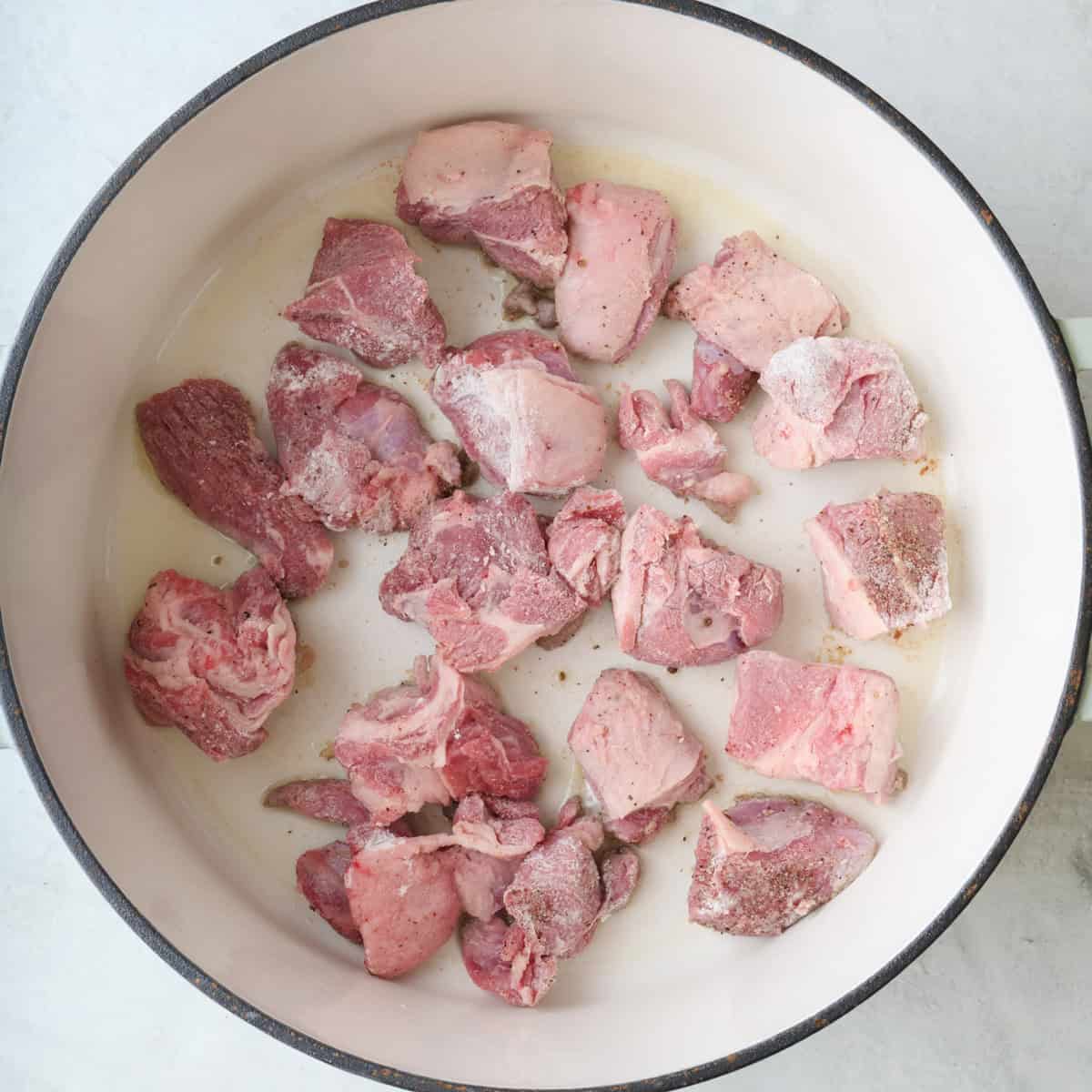
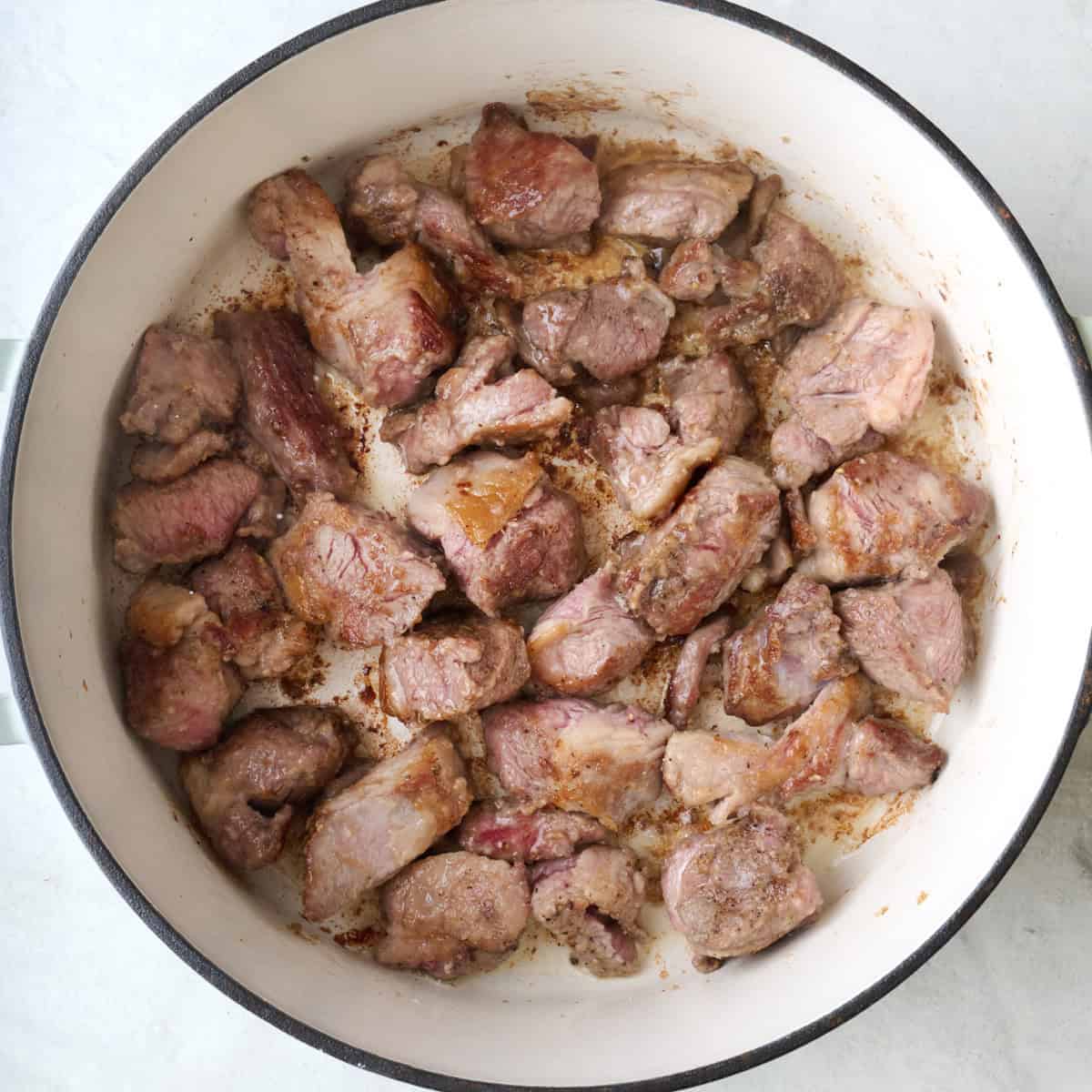
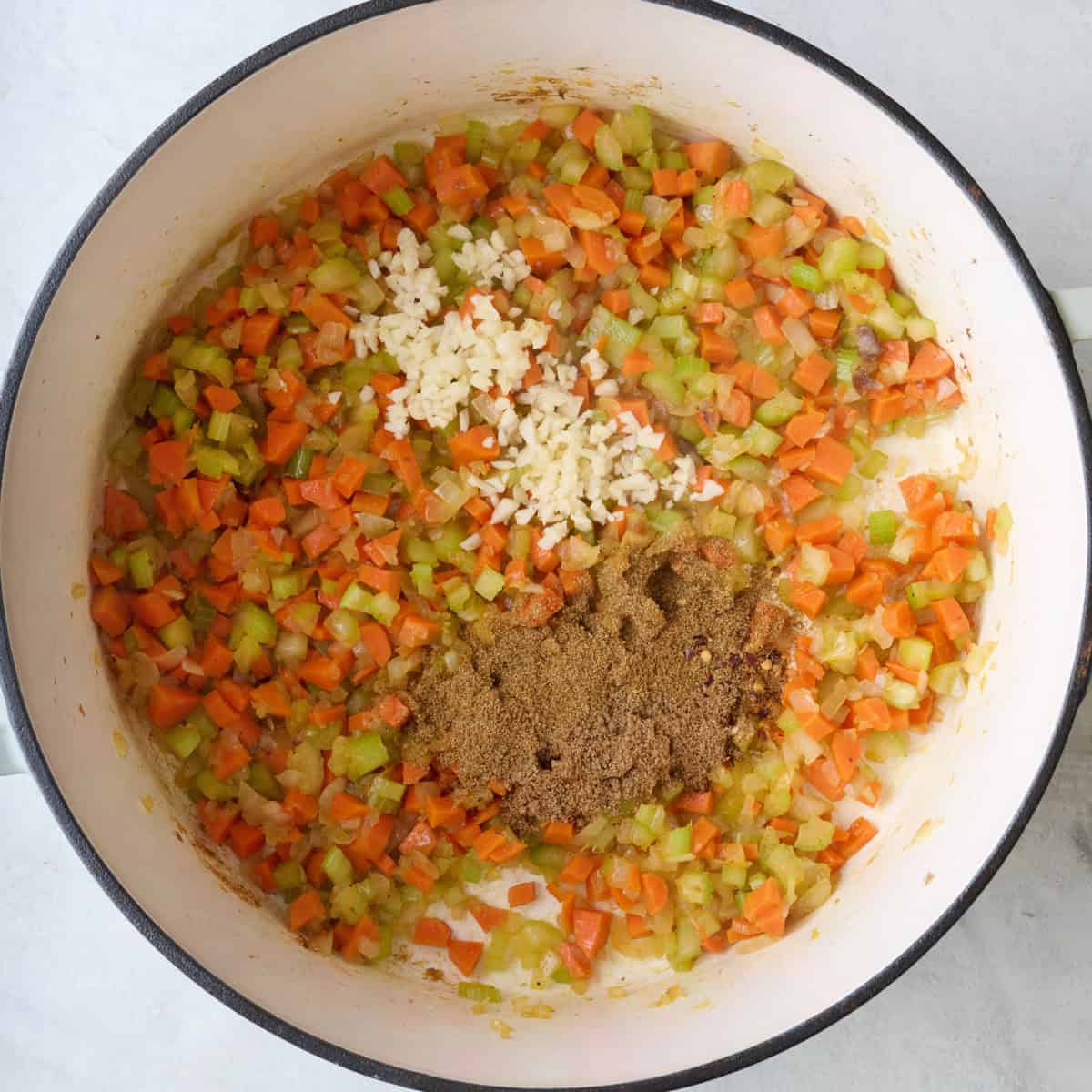
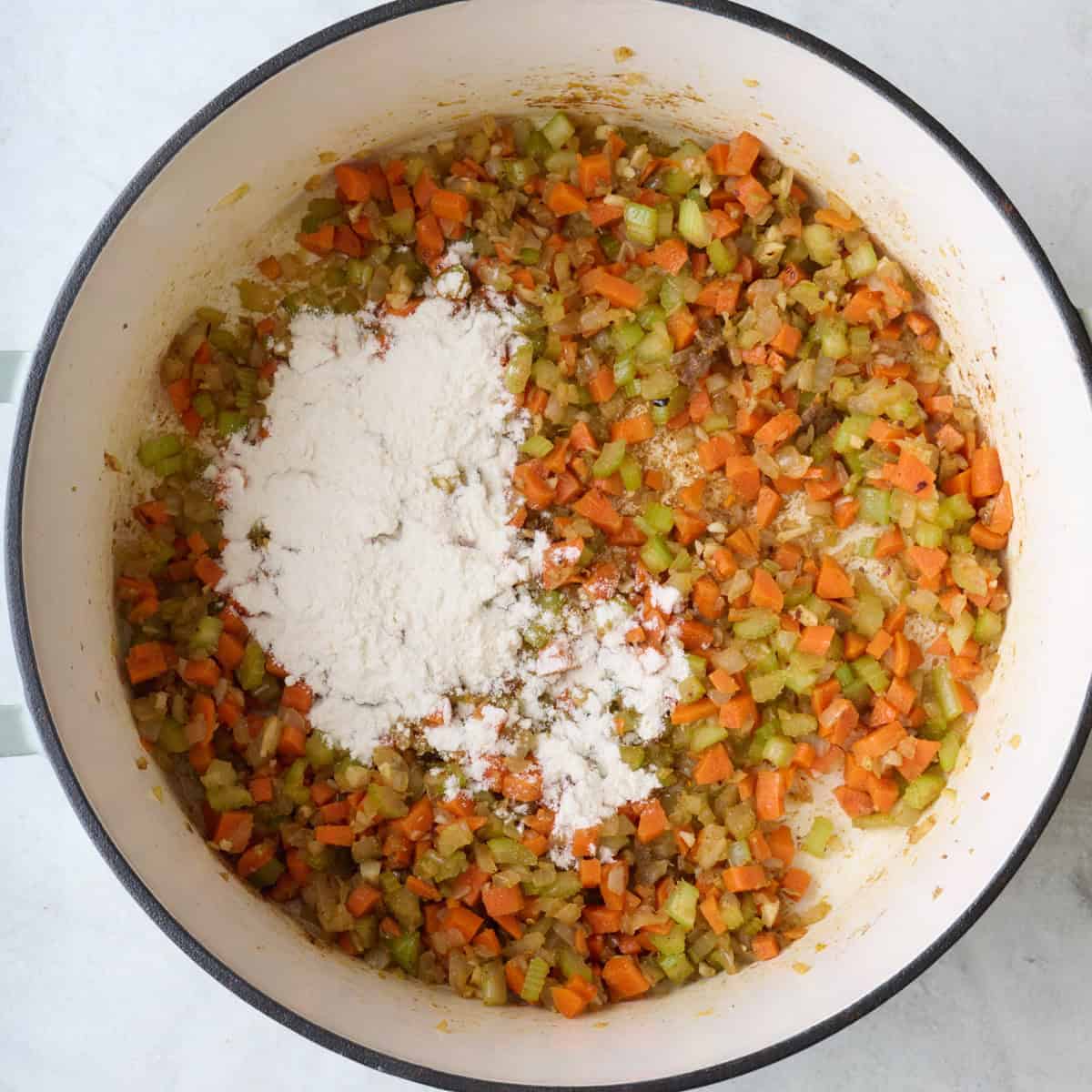
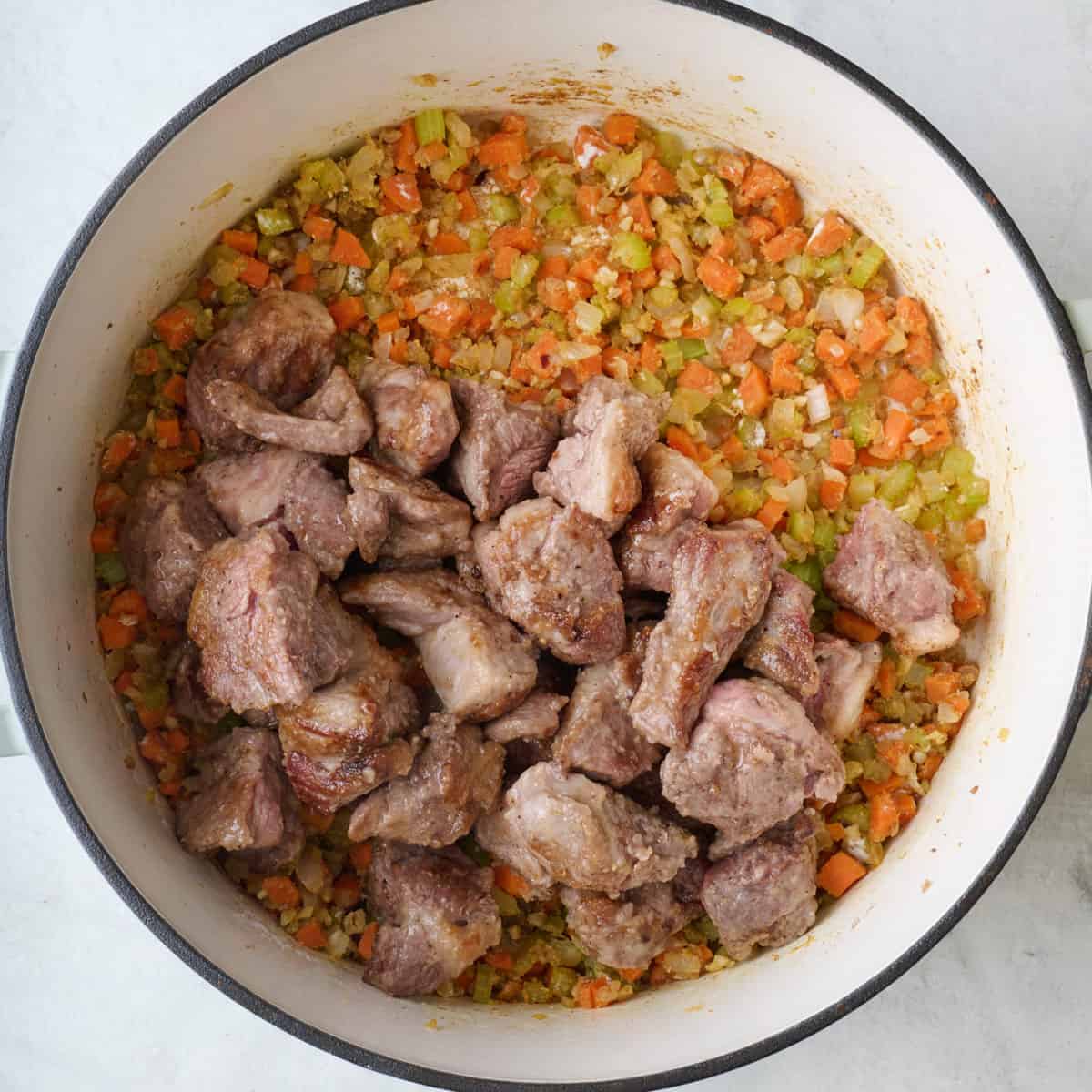
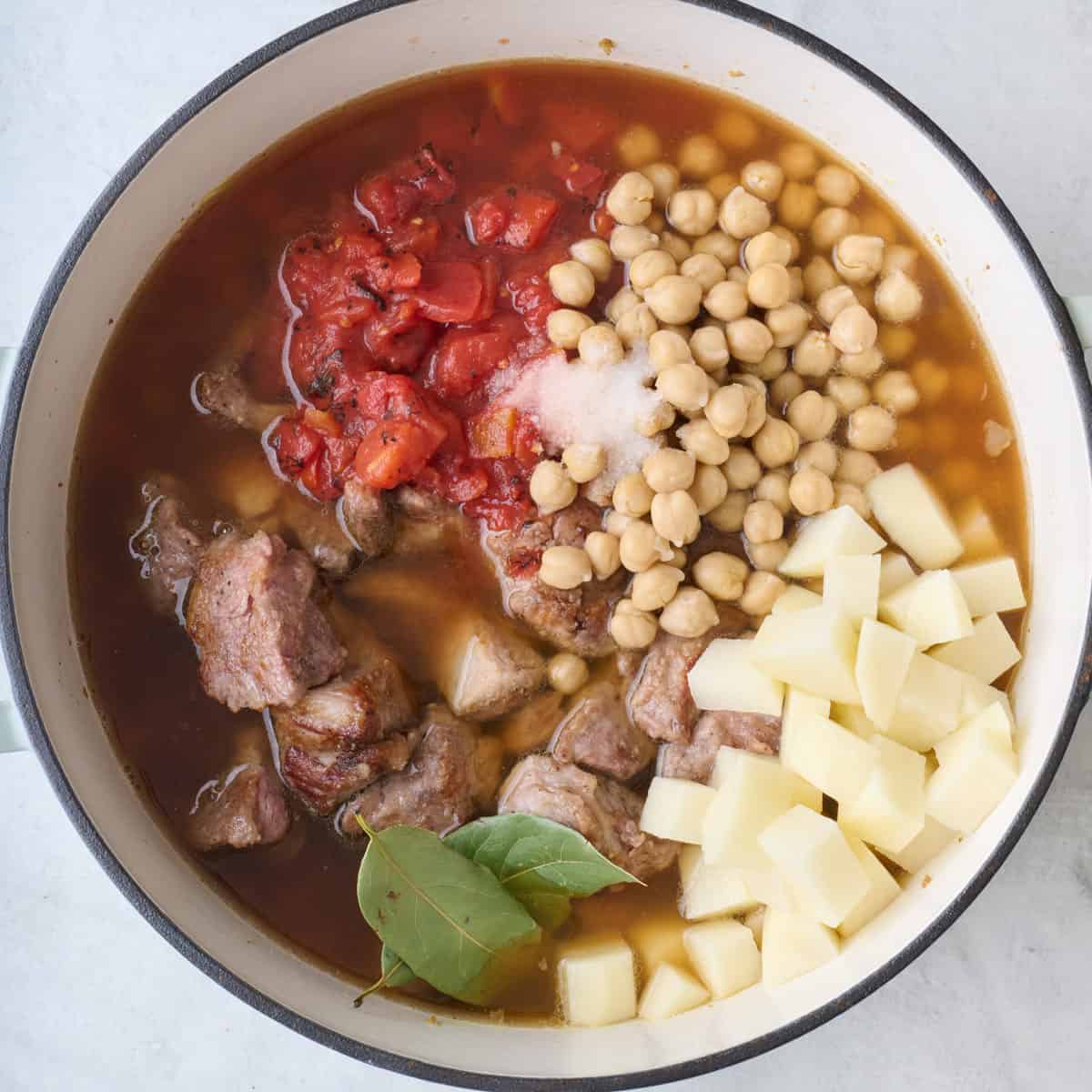
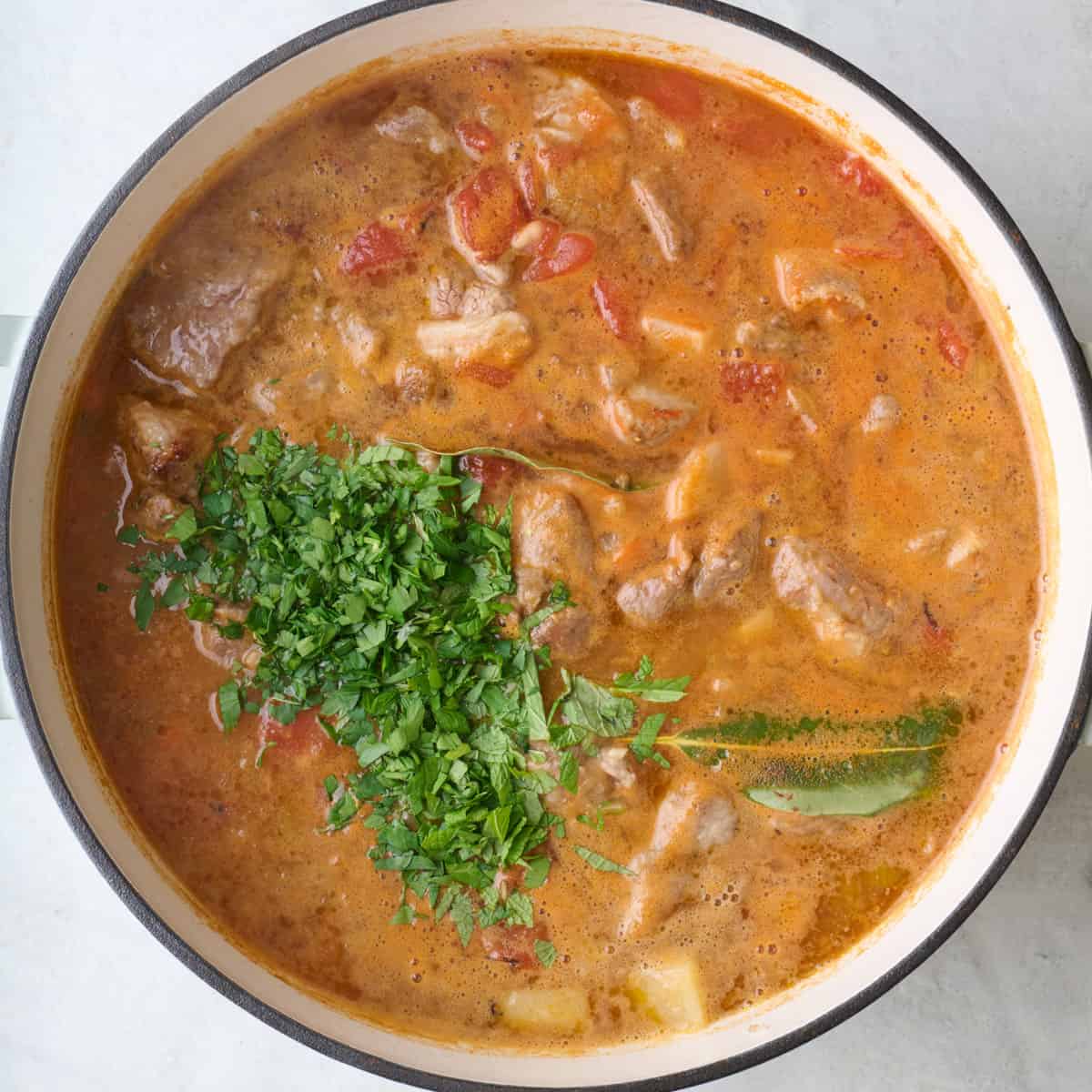
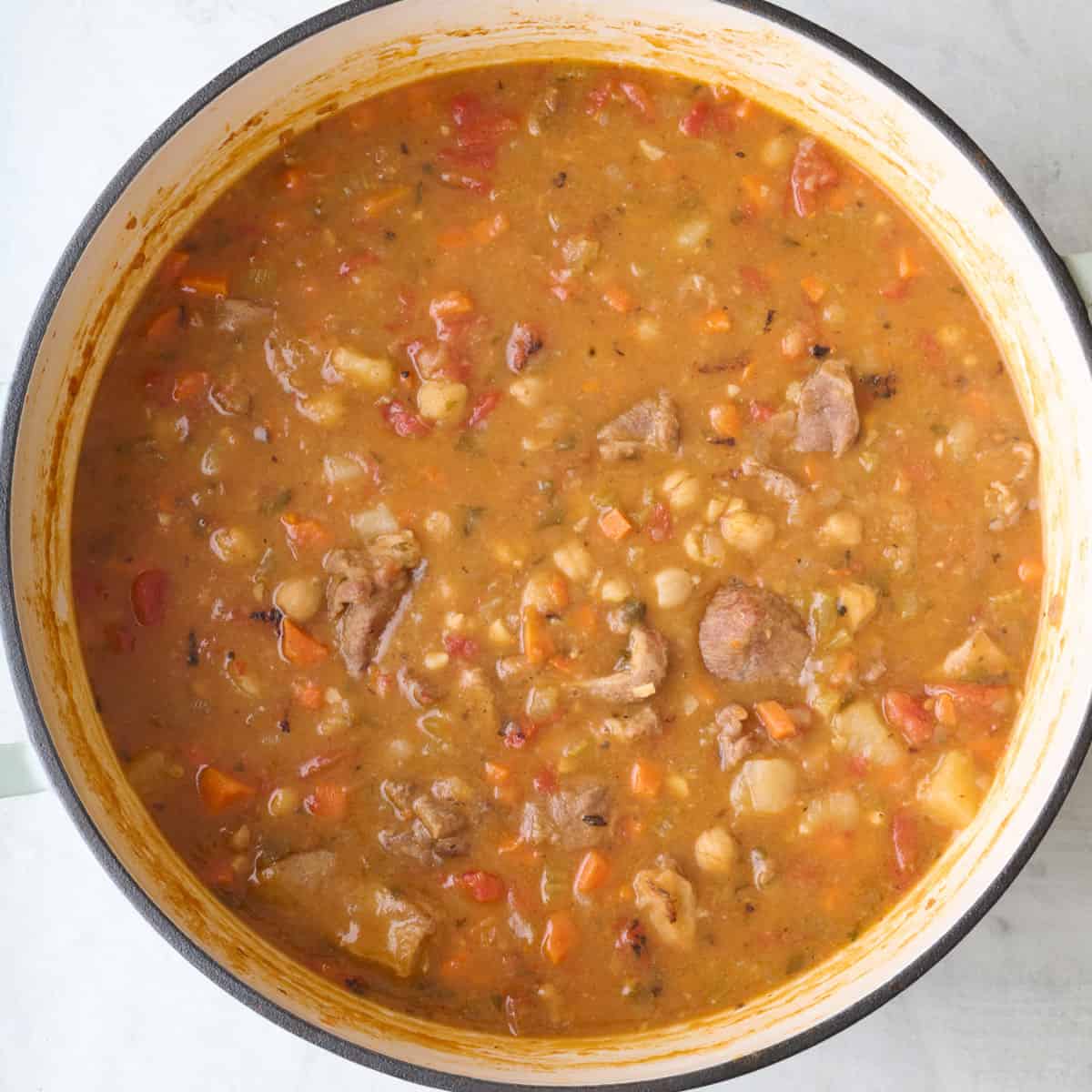
My Tips for the Best Lamb Stew
- Use the Right Cut of Lamb: Boneless lamb shoulder is ideal for stew—it’s flavorful and tender when slow-cooked. If lamb shoulder isn’t available, lamb leg or even bone-in pieces can work; just adjust cooking time as needed.
- Pat the Lamb Dry: Before seasoning and coating with flour, pat the lamb cubes dry with a paper towel. This helps them brown better, which means more flavor in the stew.
- Don’t Skip the Browning: Browning the lamb in batches creates those flavorful browned bits (fond) that will infuse the broth with richness. Take your time here—it’s worth it!
- Deglaze the Pot: After browning the lamb and cooking the veggies, scrape up all those golden bits from the bottom of the pot when you add the broth or tomatoes. That’s where the flavor is hiding.
- Cut Veggies Evenly: For even cooking, try to cut the carrots, celery, and potatoes into similar-sized pieces. This ensures everything cooks at the same rate.
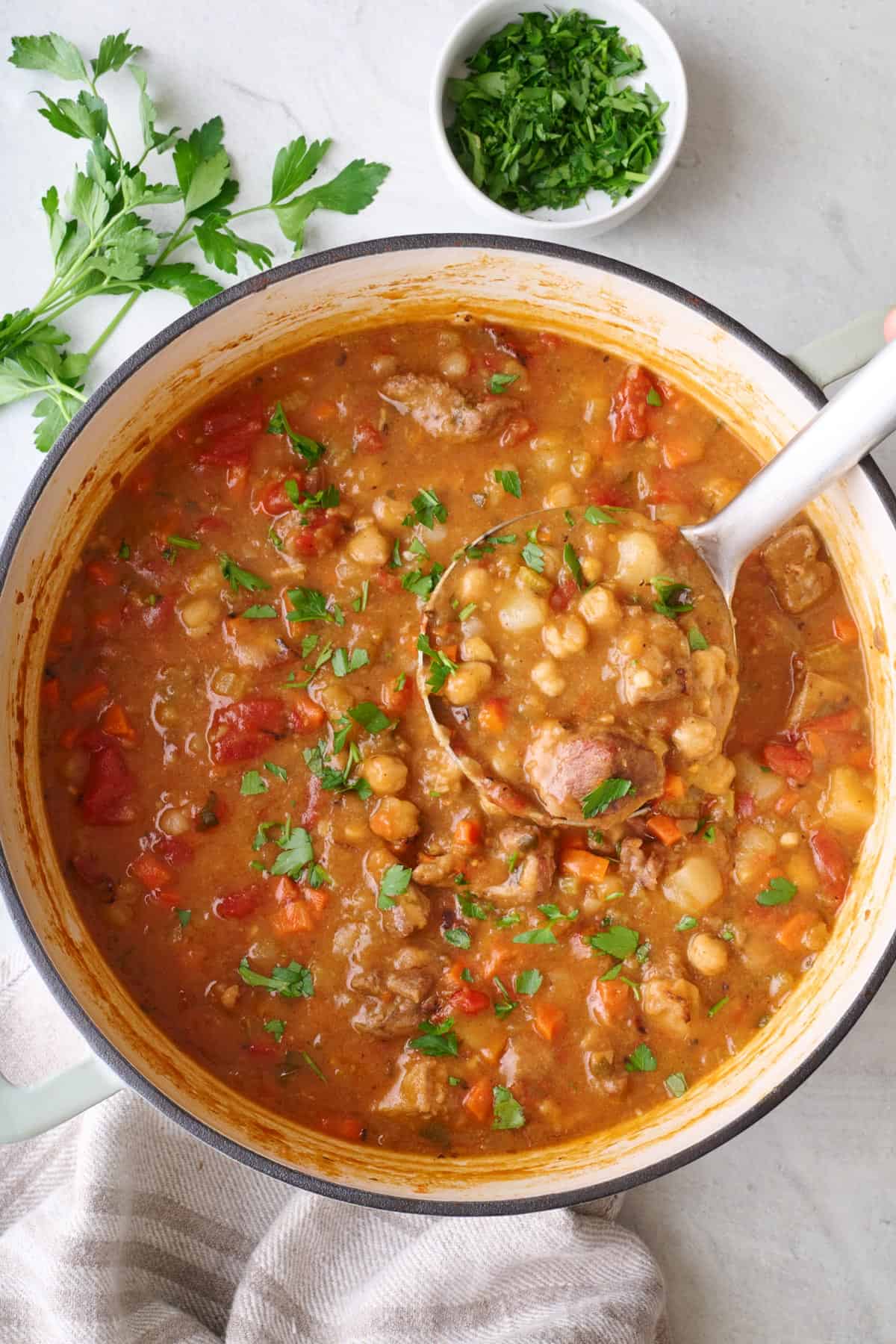
What to Serve
Recipe Help & Common Questions
Let the stew cool completely before transferring it to an airtight container. Store it in the fridge for up to 4 days. When reheating, you can warm it on the stove over medium heat or in the microwave, adding a splash of broth or water if it thickened too much.
Lamb stew freezes really well! Once cooled, transfer it to a freezer-safe container or portion it into individual freezer bags. Freeze for up to 3 months. When you’re ready to eat, thaw it in the fridge overnight and reheat on the stove or in the microwave.
If your lamb is tough, it likely hasn’t cooked long enough. Lamb shoulder needs time to break down and become tender, so let the stew simmer gently for another 15-20 minutes. Make sure you’re cooking it at a low simmer, not boiling, which can toughen the meat.
If the stew hasn’t thickened as expected, check if the flour used to coat the lamb was absorbed properly. Adding a flour or cornstarch slurry (1 tablespoon mixed with 2 tablespoons water) can help thicken it quickly.
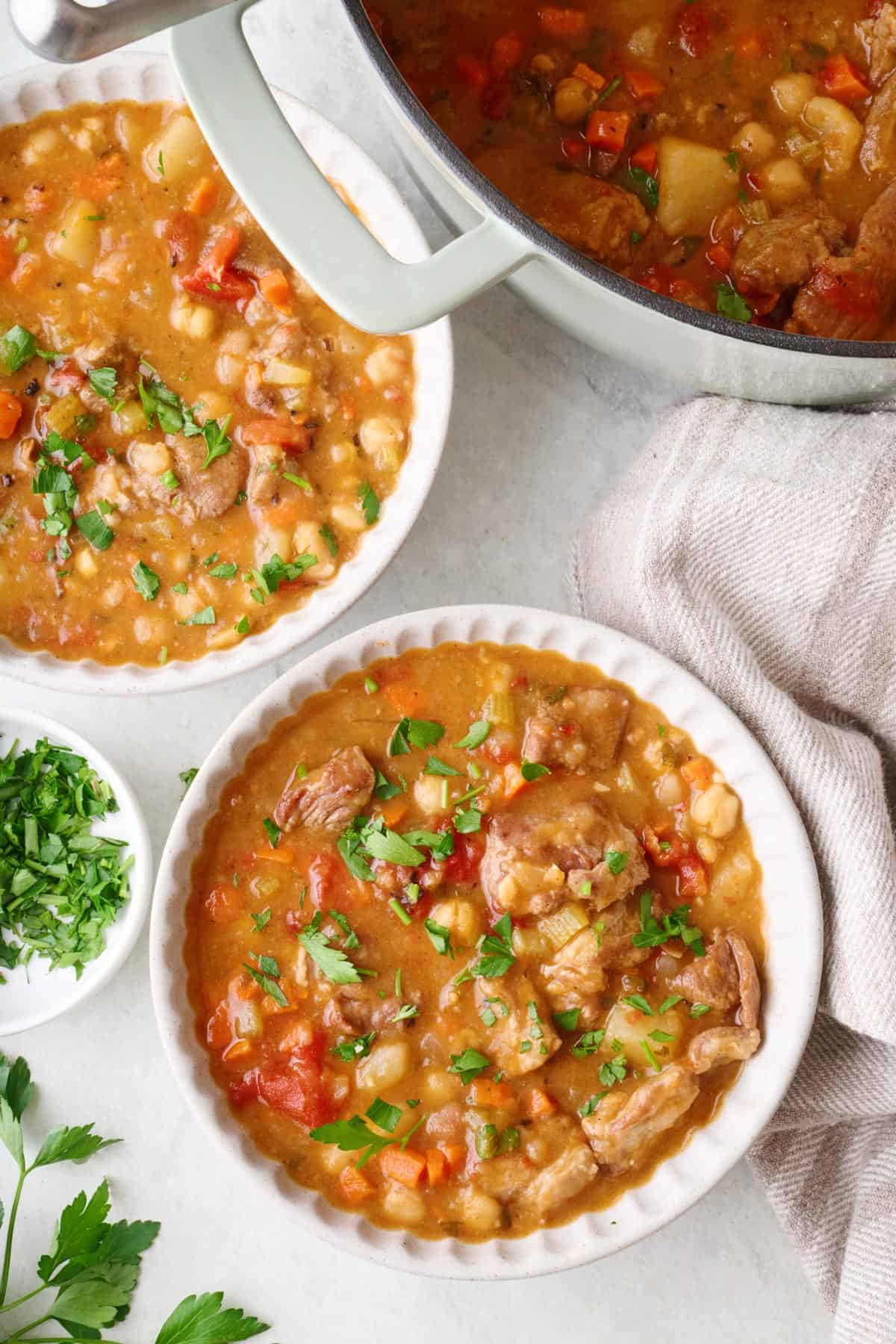
More Stew Recipes:
- Instant Pot Beef Stew
- Eggplant Stew
- Vegetable Stew
- Easy Oven Beef Stew
- Lebanese Green Bean Stew
- Cassava Stew (Yabeh)
- Okra and Beef Stew
- Lebanese Chicken Bean Stew
- Kafta Potato Stew
- Beefy Peas and Carrots Stew
If you try this feel good Lamb Stew recipe or any other recipe on Feel Good Foodie, then don’t forget to rate the recipe and leave a comment below! It helps others who are thinking of making the recipe. We would love to hear about your experience making it. And if you snapped some shots, share it on Instagram so we can repost on Stories!

Lamb Stew
Ingredients
- 2 pounds boneless lamb shoulder cut into 1-inch cubes
- 2 teaspoons salt divided
- 1 teaspoon black pepper divided
- ⅓ cup all-purpose flour
- 4 tablespoons olive oil divided
- 1 large onion diced
- 3 carrots diced
- 3 celery stalks diced
- 5 garlic cloves minced
- 2 teaspoons cumin
- 1 ½ teaspoons coriander
- ¼ teaspoon crushed red pepper
- 4 cups vegetable broth
- 1 (15-ounce) can fire roasted diced tomatoes
- 1 (15-ounce) can chickpeas rinsed and drained
- 1 pound potatoes cut into ½-inch chunks
- 2 bay leaves
- ⅓ cup sliced fresh mint
- ½ cup chopped fresh parsley plus more for garnish
Instructions
- In a large bowl, season the lamb with 1 teaspoon salt and ½ teaspoon pepper. Sprinkle with flour and toss to coat evenly.
- Heat 1 tablespoon olive oil in a large Dutch oven or heavy-bottomed pot over medium high heat. Add half the lamb in an even layer and brown on all sides, flipping occasionally, for about 7 minutes. Repeat with 1 tablespoon olive oil and remaining lamb. Reserve any extra flour to create a roux after cooking the veggies. Remove from pot and set aside.
- Add the remaining olive oil, the onion, carrots, and celery to the pot and cook for 5-7 minutes, until softened and browned. Stir in the garlic and cook for an additional minute until fragrant. Add the cumin, coriander, and crushed red pepper and toast for about 15 seconds, followed by the remaining flour, and stir until the veggies are coated well.
- Return the lamb to the pot with the broth, tomatoes, chickpeas, potatoes, bay leaves and remaining salt and pepper. Bring to a boil, scraping up any browned bits from the bottom of the pot. Stir in mint and parsley, then reduce the heat to a simmer.
- Cover and simmer for 70-80 minutes, or until the lamb is tender and the stew has thickened.
- Spoon the stew over rice and garnish with extra parsley.
Notes
Nutrition
Nutrition information provided is an estimate. It will vary based on cooking method and specific ingredients used.






Comments
Simple and delicious 😋😋😋. I replaced potatoes with rice (didn’t have potatoes at the moment), so good!
Yay, so happy you liked it! Thank you, Emi!!
So delicious! Made this stew for the family. Everyone loved it! Its comforting and flavorful broth was the perfect dish for our weekly family dinner. I added the cinnamon stick suggested and loved the flavor. This recipe will definitely be on repeat!
Aww, yay!! So happy your entire family loves the stew! Thank you so much!!